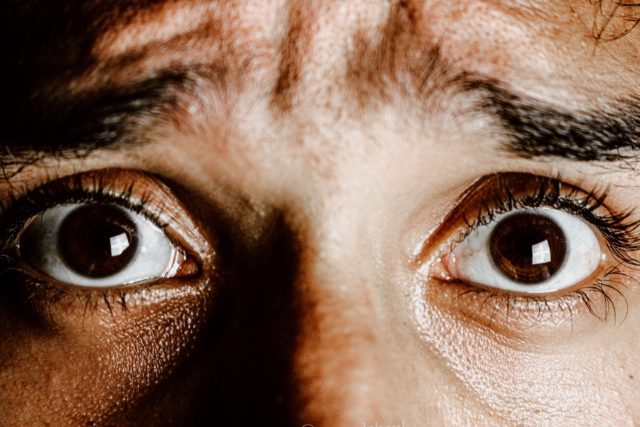What Is Exposure Therapy?
Exposure therapy is a form of behavioral therapy designed to help people confront and overcome their fears. Psychologists and mental health professionals can use exposure therapy as part of a holistic approach to help patients identify the stimuli that cause fear and better control their fear reactions to those stimuli.
The goal of exposure therapy is to help individuals overcome their fear in a healthy and constructive way so that the object, activity, or situation no longer causes uncontrollable anxiety, and they can return to a normal, fear-free life.
Let’s explore what exposure therapy can be used for and how mental health professionals can use exposure therapy to help their patient overcome their fears.

What is Exposure Therapy Used For?
Exposure therapy is helpful for treating conditions that can cause irrational anxiety, fear, or obsessive thought patterns. When we talk about irrational anxiety or fear, we aren’t referring to normal, healthy fears such as the fear of heights or of poisonous snakes. These fears, when in moderation, help us to survive and avoid situations that could cause injury or even death. Irrational fears, on the other hand, are fears that are completely out of proportion to the severity or probability of the situation, or which cause a serious disturbance in the daily activities of an individual.
An example of an irrational fear or anxiety might be someone who works on a top floor in a tall office building but who has an uncontrollable anxiety response to elevators, believing that the elevator will break, causing them to fall to their death. While the fear of falling is a legitimate fear, the likelihood of such a scenario is so small that the anxiety response is causing more harm than the actual situation. Another example would be an individual who has such an uncontrollable fear response to snakes that even a photograph of a snake can cause them to have uncontrollable anxiety.
Exposure therapy works best when it is used to address this type of challenge because it helps individuals realize that their anxiety is unfounded and helps them to create healthier responses to the stimuli or situation causing the response. This will help the irrational response naturally fade over time by helping the individual face the uncomfortable or scary situation in a controlled way and demonstrating that they can handle that anxiety.
These are some of the conditions and anxiety disorders exposure therapy can help treat:
- Phobias
- Panic disorders
- Generalized anxiety disorder
- Social anxiety disorder
- Post-traumatic stress disorder
- OCD
How Does Exposure Therapy Work?
As we can see, exposure therapy can be helpful for treating a number of mental health conditions, including phobias, generalized anxiety disorder, and social anxiety disorder. Now let’s take a look at how this therapy works in practice.
A therapist will guide their patient through a controlled process to face their fears through a series of supervised exposures, basing the level of exposure on the patient’s level on the fear hierarchy or “Ladder” that serves as a roadmap for treatment.
There are several ways that the therapist can choose to expose the patient to the anxiety-inducing stimulus. While each of these has the common goal of helping the individual become more comfortable and better able to control their emotional responses to the stimulus, they vary greatly in intensity and pacing, giving the therapist flexibility in the treatment process.
Graded exposure
The most basic and easiest method is known as graded exposure. This method involves exposing the individual to the source of their fear gradually over time by beginning with very light exposure to the stimulus and slowly progressing to more intense exposures as the patient becomes acclimated. For example, if an individual is afraid of insects, the therapist may begin by asking the patient to look at images of “nice” insects such as ladybugs or dragonflies.
Once the patient has become accustomed to these images and is able to control their emotional responses, the therapist may introduce them to a live bug inside a plastic box, allowing the patient to observe the insect in a safe and controlled way. As the patient moves into more advanced stages, the therapist may ask them to hold a live insect in their hands, for example.
Systematic desensitization
Systematic desensitization is used to help the patient overcome the stress response somewhat quicker than simple graded exposure by introducing them to techniques that help them relax, such as controlled breathing exercises, yoga, muscle relaxation, or guided imagery. This can allow the therapist to expose the patient to stimuli in a more aggressive way.
Flooding
For situations where the anxiety or fear response is causing serious difficulties in the patient’s daily life, the therapist may wish the employ a technique known as flooding. This method involves exposing the patient to a large ‘dose’ of the stimulus all at once.
While this approach can be the quickest way to help the patient overcome their fear, the approach can also be incredibly stressful or traumatic to experience, especially if the patient is not ready for such a strong exposure. This method should only be used once the therapist considers that the patient has the appropriate foundation and that their anxiety has decreased to a manageable point through less severe methods.
How Can Mental Health Professionals Implement Exposure Therapy?

Now that we have seen the levels of exposure therapists use to help patients overcome their fear and anxiety, let’s look at some of the tools they can use to expose individuals to stimuli in a controlled and supervised way.
In Vivo Exposure
In vivo exposure is a method where the individual is exposed to a feared stimulus or situation in real life. An example of this would be a patient with a fear of snakes going to the zoo and seeing the snakes inside their cages.
Imaginal Exposure
In imaginal exposure, the therapist will ask the individual to imagine the feared situation happening. The patient should try to create a realistic, highly detailed scenario in their head. An example would be for the patient to imagine getting onto an elevator, and talking through the process out loud, while commenting on their thoughts, emotions, and reactions to the imagined scenario.
Interoceptive Exposure
Interoceptive exposure is used to help the individual deal with the physical sensations brought on by the fear or anxiety response; this is typically used for treating panic attacks.
Virtual Reality Exposure
Virtual reality exposure is a newer method that allows patients to come face-to-face with their fears through the use of virtual reality technology.
What are The Goals of Exposure Therapy?
When a therapist begins working with a patient using exposure therapy, they will look for a series of milestones to determine whether the patient is responding well to the therapy. While each patient will respond differently to this type of therapy depending on a range of factors, including the severity of the fear response, the therapist will expect to guide the patient through a series of cognitive and emotional stages.
Habituation
As the patient is gradually and repeatedly exposed to the source of their fear in a controlled and supervised environment, their reaction to the fear-inducing stimulus may decrease over time.
Extinction
As the exposure therapy continues, the therapist will seek to offer a safe environment for the patient to learn that the fear-inducing stimulus does not pose a serious threat to them. The process can weaken the association between the stimulus and the negative outcome the patient expects until eventually the patient can eliminate the overwhelming fear response and develop healthier mental models of the stimulus.
Emotional processing
As the patient develops healthier reactions to the stimulus, they begin to be able to process and evaluate their emotional responses to the stimulus in a clearer way and explore the source of their fear. The therapist looks to help the patient replace unhealthy, instinctive responses to the feared stimulus with responses based on more realistic thoughts and beliefs, making it easier for the patient to overcome their fear and anxiety.
Self-efficacy
As the patient progresses with the exposure therapy, it becomes easier for them to feel confident in their ability to confront the fear-inducing stimulus and manage the anxiety it causes without the need for supervision.
After receiving his undergraduate degree in psychology, Scott went on to work as a teacher and educational counselor while working towards his master’s degree. He has spent several years working with children and adults and has personal experience with Attention Deficit Hyperactive Disorder, Dyslexia, and Depression.